あなたのカート
-
${ item.product_title }¥ ${item.price}
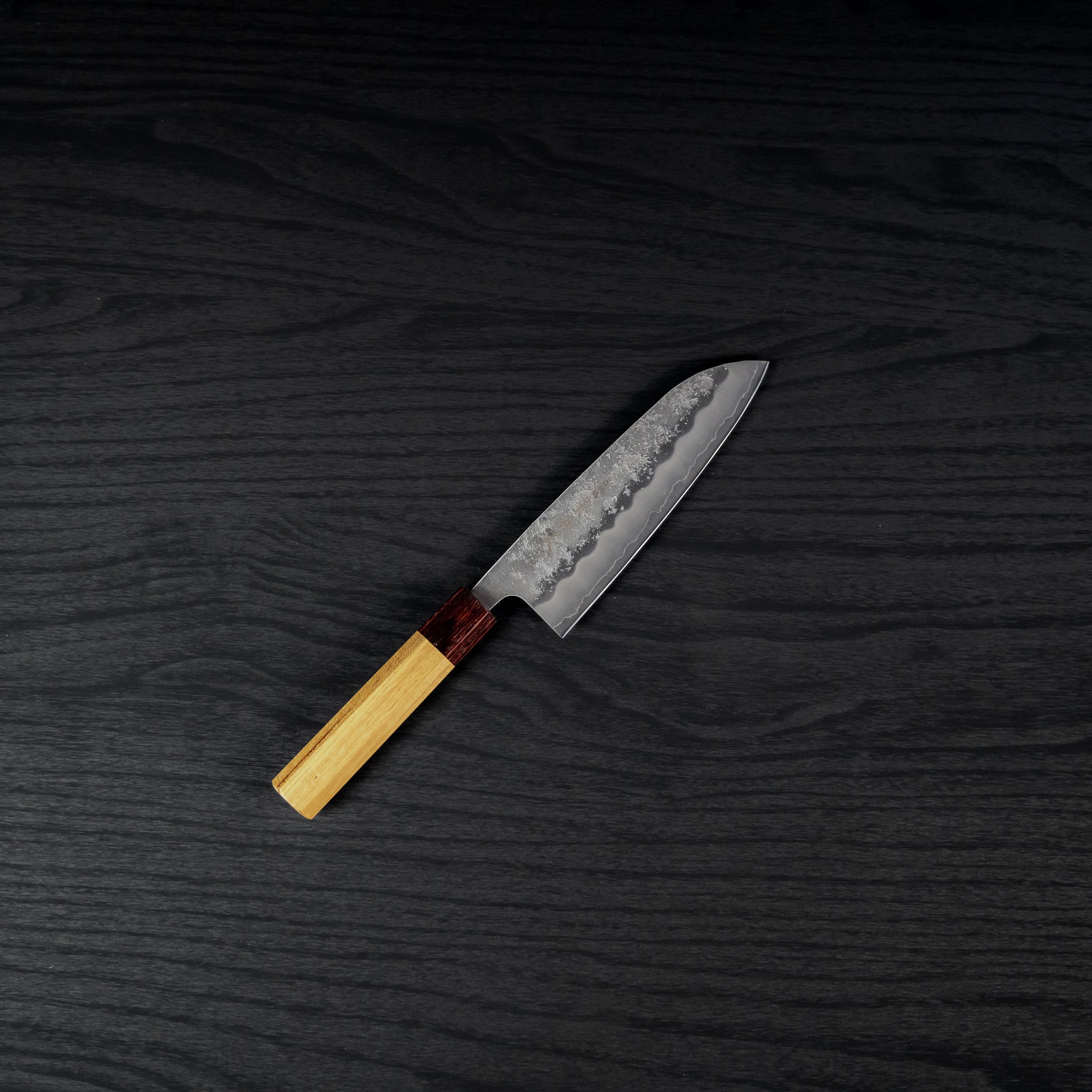
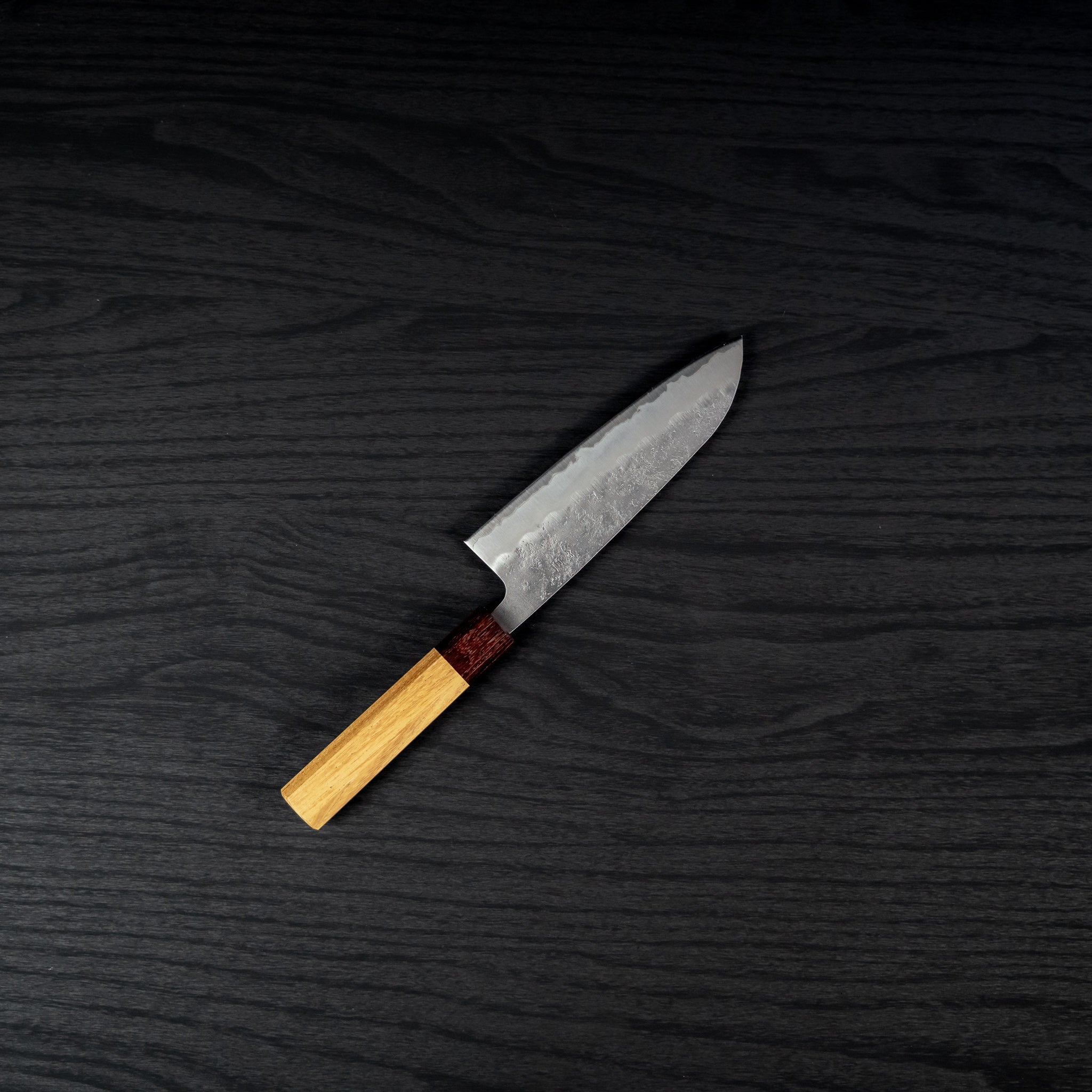
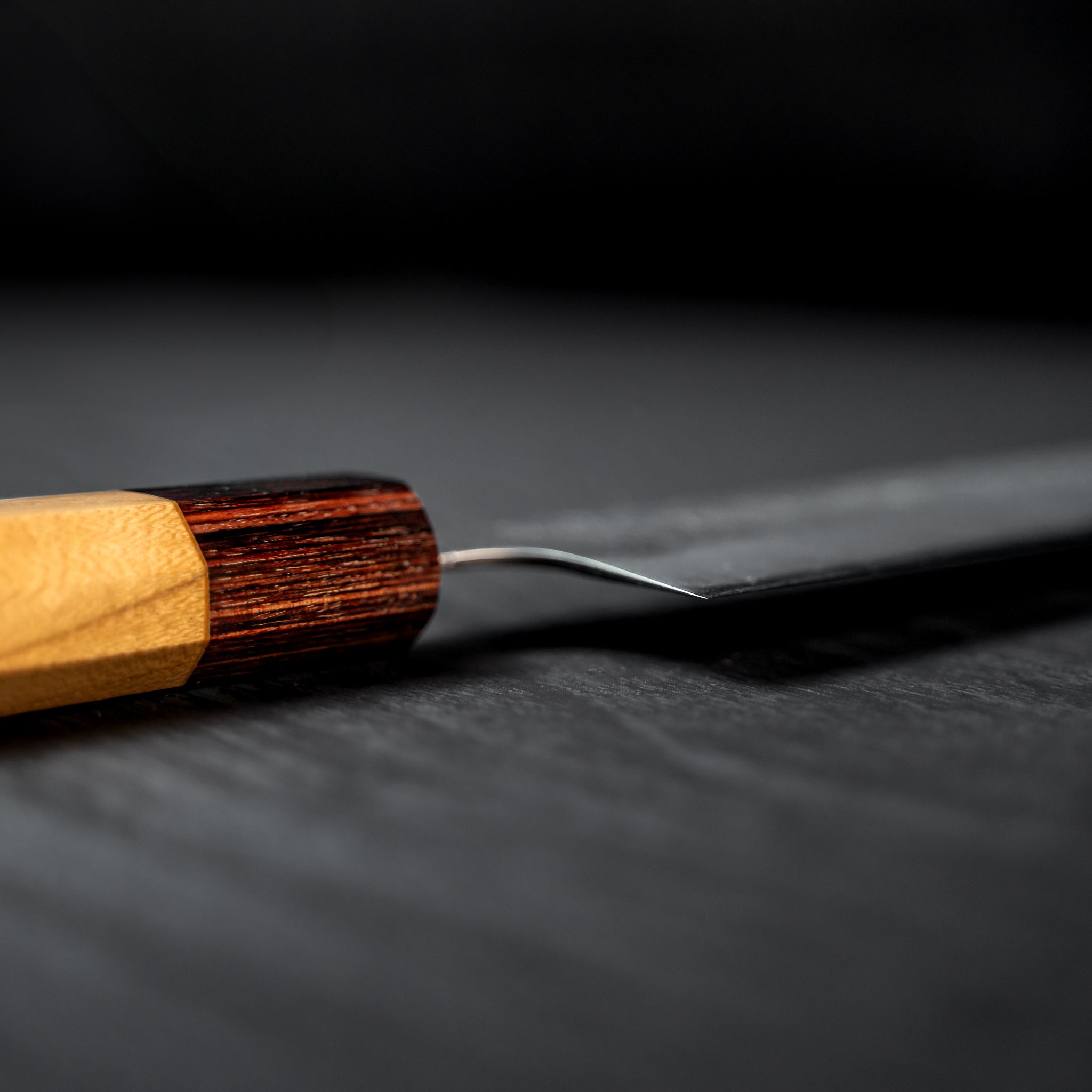
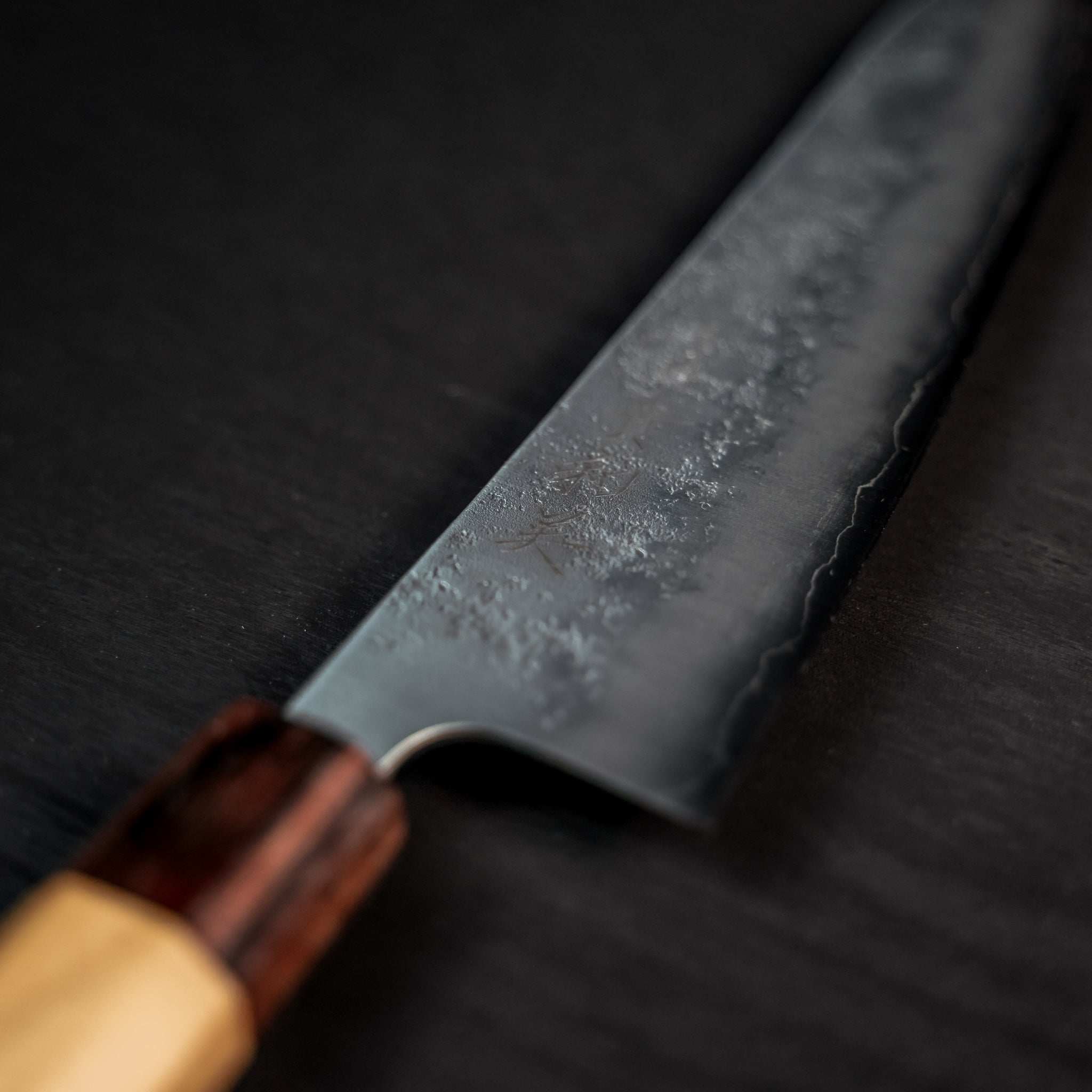
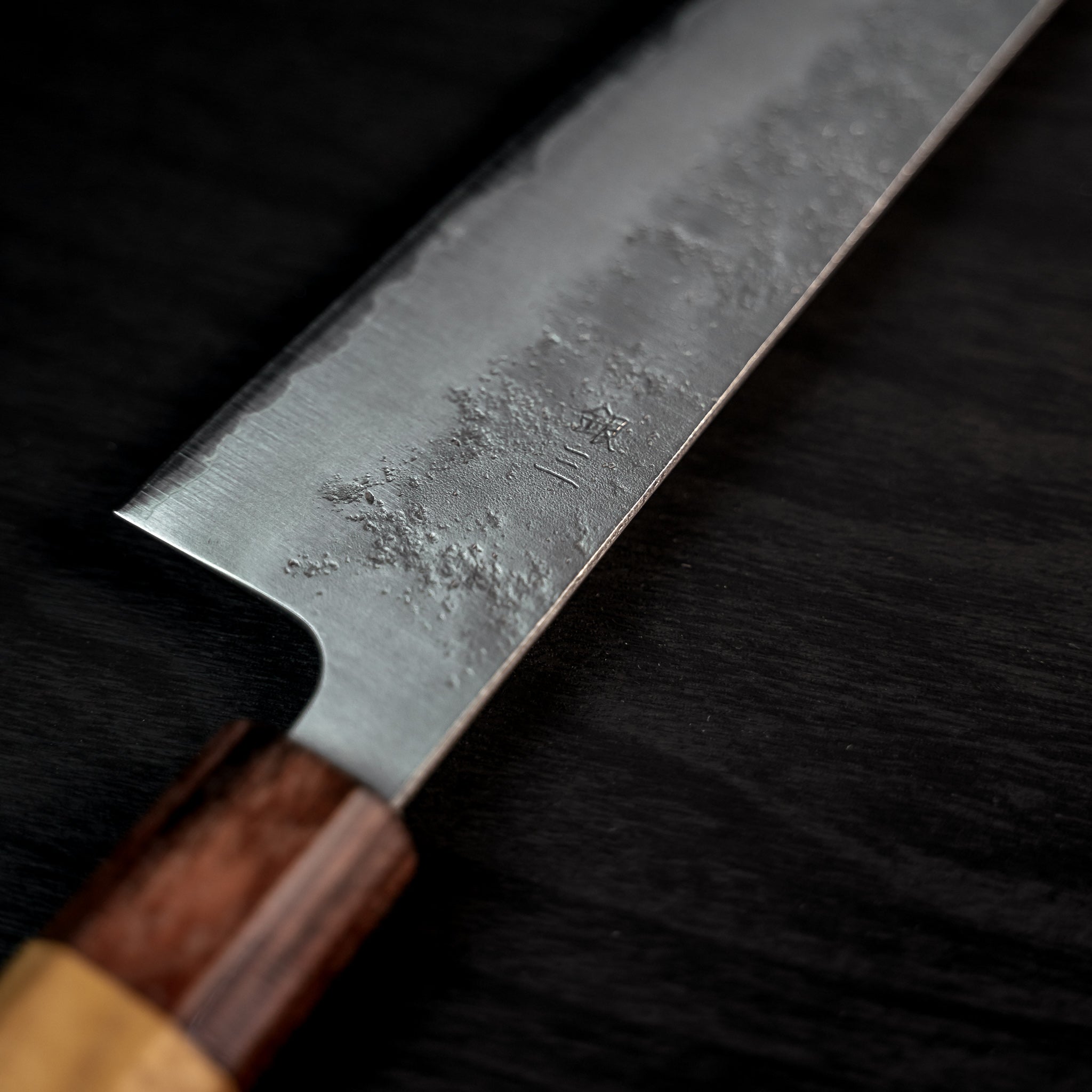
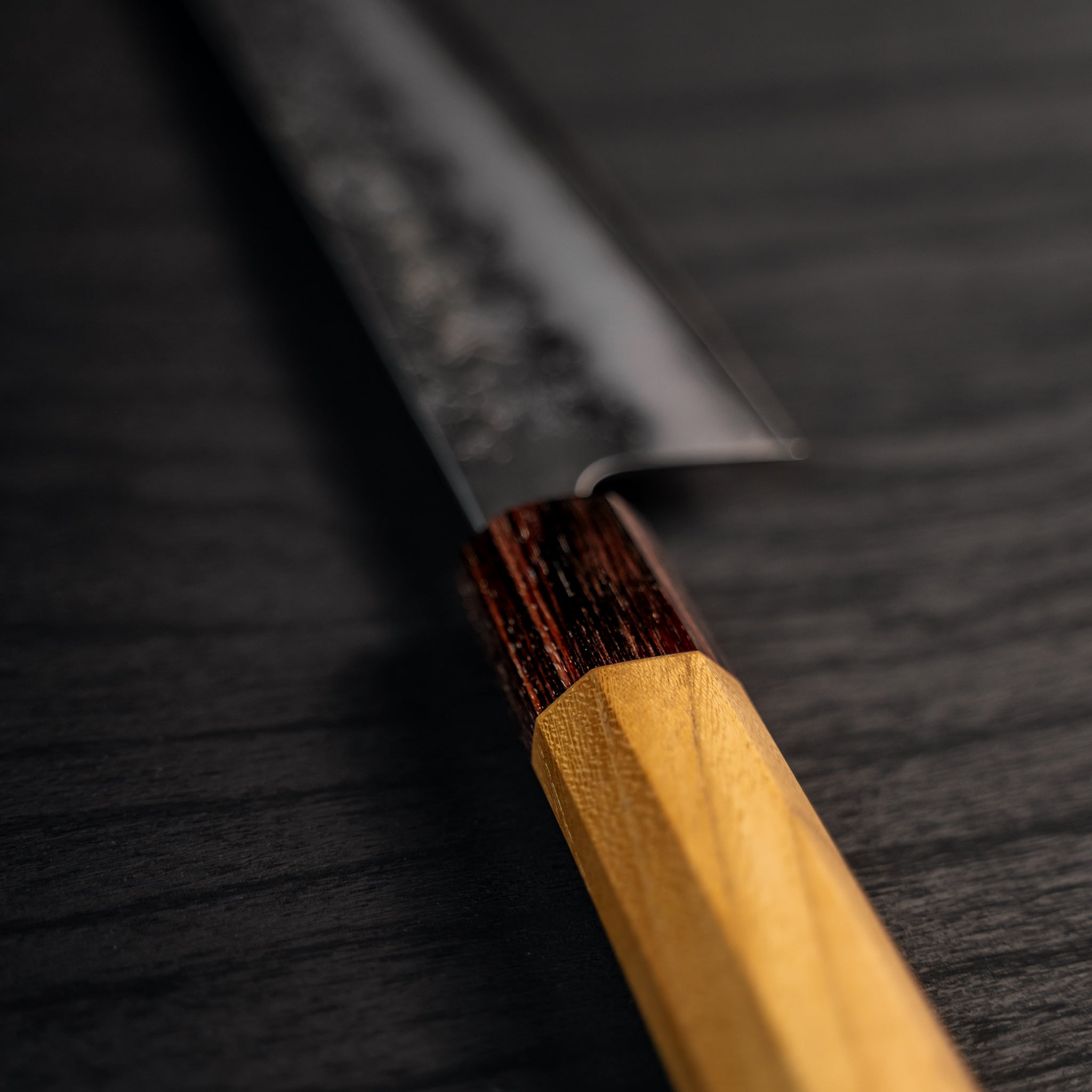






価格:
三徳 包丁は伝統的な日本の包丁で、その名前「三徳」が示すように、肉、魚、野菜の3つの用途に使用できるため、本質的に多目的です。刃の長さは通常6.5インチ(165 mm)または7インチ(180 mm)で 、 両側が研がれています(両刃)。これにより、刃が扱いやすく、長持ちします。三徳包丁は、 その汎用性と優れた性能により、プロのシェフ や 家庭料理人に広く使用されています。この包丁を使用すると、料理の準備が非常に簡単で楽しく なります。
銀3号鋼(銀3または銀紙三号)、クロムを14%添加した ステンレス炭素鋼 です。日本の炭素鋼の特性を保持しながら、白紙2号(白2炭素鋼)と同等の硬度を持つ 銀3はステンレスです。刃持ちは白紙2号よりわずかに劣りますが、研ぎやすさ、炭素鋼の特性、そしてステンレス性を兼ね備えているため、メンテナンスが簡単な日本の炭素鋼ナイフを求める方に最適です 。
ケヤキハンドル:ケヤキ(日本のケヤキ – ニレの木)は 日本で高く評価されており 、 家具によく使用されるほか、伝統的な太鼓の製作に最適な木材と考えられています。観賞用樹木として栽培され、盆栽に使用されることも多いです。美しい木目を持つ ケヤキの木は、硬く、重く、密度の高い木材です。
梨地は日本語で「梨の皮模様」を意味します。これは、刃の表面を仕上げずに残すか、軽く叩くことで得られる印象的で上品な質感が特徴の包丁の仕上げ技法です。この仕上げは、アジア産の梨の皮を模倣しています。黒打ち(黒仕上げ)とは異なり、梨地仕上げはわずかに凹凸があり、黒仕上げよりも滑らかです。しかし、梨地仕上げはサテン仕上げよりも粗いです。梨地仕上げは、包丁を握ったときに心地よい感触を与えます。梨地仕上げは、黒打ちと磨き仕上げの中間です。また、手頃な価格になる傾向があります。